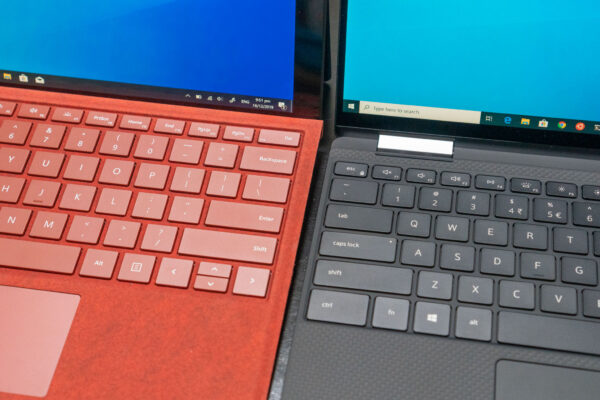
Intel’s 10th generation processors currently feature two processor line-up: 14 nm Comet Lake, and 10 nm Ice Lake processors. The Ice Lake based processors, especially the top-end i7-1065G7, are proving to deliver significant benefits.
For some years now, Intel’s usual tick-tock cycle of alternating between process technology shrinking and microarchitecture update has been messed up. There was a short-lived attempt at 10 nm in 2018 that only produced a lack-lustre entry-level processor. Going from 14 nm to 10 nm turned out to be quite a challenge.
Things are looking up with 10th generation Ice Lake processors. I had a couple of notebooks come by recently and saw the opportunity to compare directly between the two lines of 10th generation processors, i.e., Ice Lake and Comet Lake.
Before I start on that, let me digress a little to talk about how Intel has messed up their processor naming convention. Comet Lake processors, like the i7-10710U, use the regular naming convention we’ve become quite familiar with. The “10” is the generation number, while the “710” is the processor SKU number. The “U” suffix denotes 15 W processors designed for mobile use. A “Y” suffix denotes a more low-powered 7 W processor.
Ice Lake processors, like the i7-1065G7, however, have quite a different naming scheme. The “10” there is still for the 10th generation processors, but the processor SKU number, “65” in this case, is just two digits now. Furthermore, there is whole new meaning to the “G7” suffix. That part is now used to denote the level of “graphics capabilities”. These are the graphics levels presently available:
- G1: The usual “integrated UHD graphics” with 32 execution units
- G4: Iris Plus Graphics with 48 execution units
- G7: Iris Plus Graphics with 64 execution units
There is no indication from the processor number to tell you the TDP wattage.
I presently have two Ice Lake notebook, both with the i7-1065G7: Microsoft Surface Pro 7 and Dell XPS 13 7390 2-in-1. I also have an ASUS ZenBook Duo UX481 with the 10th generation Comet Lake i7-10510U processor. Both the i7-1065G7 and i7-10510U are 4-core/8-thread 15 W TDP processors.
Here are some PCMark 10 Extended scores for comparison. In these synthetic tests, the Ice Lake processor perform better than its Comet Lake brethren.
| PCMark 10 Extended | MS Surface Pro 7 | Dell XPS 13 7390 2-in-1 | ASUS ZenBook Duo |
| Overall | 3825 | 3648 | 3969 |
| Essentials | 9140 | 9585 | 9784 |
| Productivity | 7050 | 7224 | 7407 |
| Digital Content Creation | 3756 | 3452 | 2802 |
| Gaming | 2390 | 2005 | 1035 |
I know, it doesn’t look at first glance like the i7-1065G7 is particularly good. But wait, look at the gaming score! The difference there is quite remarkable.
Here’s another comparison in Geekbench 5.
| Geekbench 5 | MS Surface Pro 7 | Dell XPS 13 7390 2-in-1 | ASUS ZenBook Duo |
| Single-Core | 1326 | 1322 | 1302 |
| Multi-Core | 4770 | 4707 | 4428 |
| Compute (integrated) | 10369 | 10633 | 6097 |
| Compute (dedicated) | n/a | n/a | 9488 |
Notice that the ASUS ZenBook Duo, with a dedicated MX250 GPU (albeit a low-end one), loses out to the i7-1065G7? At the very least, the benchmarks seem to show that the Iris Plus Graphics with 64 execution units has better performance than the MX250 GPU.
The NVIDIA GeForce MX250 isn’t old, and you’ll find it in several current notebooks released this year. Intel has always struggled to keep up with graphics performance. The Iris Plus Graphics seems to be quite capable. Furthermore, being integrated to the CPU, you’d expect battery consumption to be much lower on Iris Plus Graphics systems than ones that use a dedicated MX250.
With that being the case, there seems to be little point in the MX250 now?
